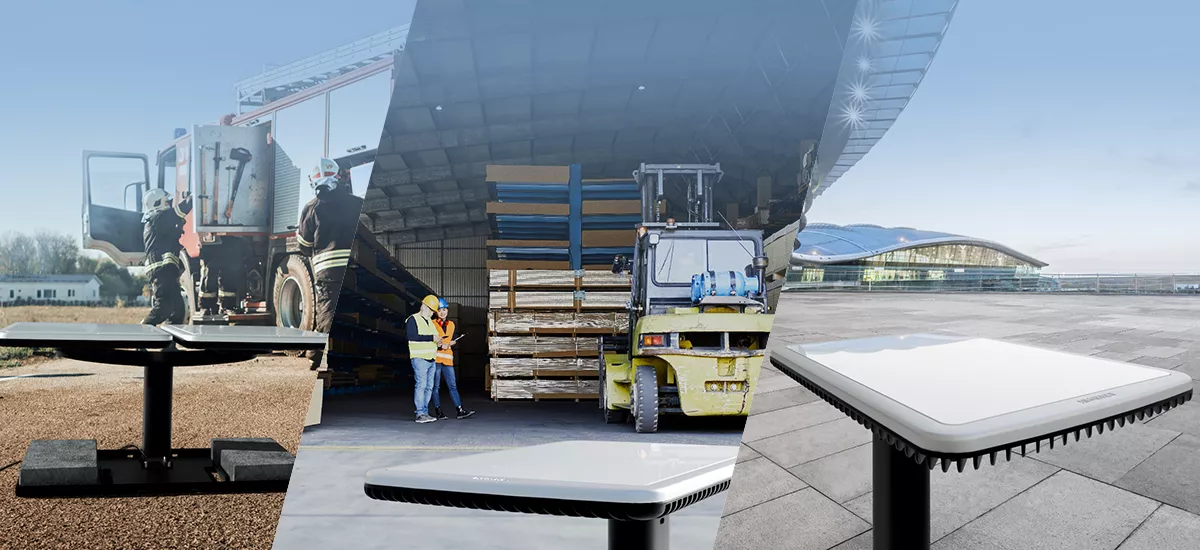Hughes Electronically Steered Antennas
Hughes LEO Electronically Steered Antenna (ESA) für OneWeb liefert Hochgeschwindigkeits-Internet mit geringer Latenz für anspruchsvolle, abgelegene Umgebungen und mobile Einsätze.
Unsere elektronisch gesteuerten Antennen sind vielseitig in der Schifffahrt, Luftfahrt und in Unternehmen einsetzbar und bieten zuverlässige Konnektivität für Schiffe, Flugzeuge und abgelegene Industriestandorte.
Durch den Einsatz fortschrittlicher LEO-Satellitentechnologie bietet unsere ESA-Hardware eine robuste Verfolgung und Signalstärke unter schwierigen Bedingungen und bietet reduzierte Latenzzeiten und erhöhte Bandbreite.
Unsere elektronisch gesteuerten Antennen sind für eine einfache Installation und Integration konzipiert. Sie minimieren Ausfallzeiten und Unterbrechungen und unterstützen einen nahtlosen Übergang zu verbesserter Konnektivität.
Profitieren Sie von betrieblicher Effizienz mit zuverlässiger Hochgeschwindigkeits-Konnektivität, Kosteneinsparungen durch skalierbare Lösungen und einem Wettbewerbsvorteil mit führender Technologie für die digitale Transformation.

Hughes HL1120 Benutzerterminal (UT)
Dieses Terminal verfügt über eine fortschrittliche elektronisch gesteuerte Antennentechnologie (ESA), die für die Integration mit der OneWeb Ku-Band LEO-Satellitenkonstellation optimiert ist. Dieses kompakte Vollduplex-Terminal verfügt über ein integriertes Modem, das eine schnelle und kostengünstige Kommunikation mit hoher Bandbreite und minimaler Latenzzeit ermöglicht.
Das leichte, witterungsbeständige Gehäuse ist für den Außeneinsatz konzipiert und gewährleistet Langlebigkeit und einfache Installation. Das HL1120 UT richtet sich bei der Einrichtung automatisch auf die Satellitenkonstellation aus und bietet zuverlässige Konnektivität für verschiedene Anwendungen, von Remote-Operationen bis hin zu mobilen Einsätzen, wodurch die betriebliche Effizienz und die globale Konnektivität verbessert werden.
Das Hughes HL1100 Benutzerterminal (UT)
Bei diesem Terminal handelt es sich um eine elektronisch gesteuerte Antenne (ESA) mit niedrigem Profil, die eine bahnbrechende LEO-Antennentechnologie darstellt. Das HL1100 ESA ist ein selbstausrichtendes Halbduplex-Terminal mit einem integrierten Modem, das für die OneWeb Ku-Band LEO-Satellitenkonstellation entwickelt wurde. Es gewährleistet eine kostengünstige, schnelle Kommunikation mit hoher Bandbreite und niedriger Latenz.
Das HL1100 UT eignet sich ideal für verschiedene Anwendungen weltweit und ist leicht, stromsparend, wetterbeständig sowie einfach zu installieren und zu warten. Er besteht aus einem robusten Aluminiumgehäuse und kann sich selbst mit der Satellitenkonstellation verbinden, um sofort einsatzbereit zu sein.
Der kompakte und benutzerfreundliche HL1100 UT maximiert die Fähigkeiten des OneWeb-Systems und bietet eine Hochgeschwindigkeitsverbindung mit niedriger Latenz und einfacher Installation.

| Hughes Single Panel LEO Terminal (HL1100) | Hughes Dual Panel LEO Terminal (HL1120) | |
Peak Downlink Data Rate | up to 57 Mbps | up to 195 Mbps |
Peak Uplink Data Rate | up to 10 Mbps | up to 32 Mbps |
ESA Dimensions | 23.5 in. x 15.8 in x 2.4 in | 23.5 in. × 32.6 in. × 5.4 in. |
ESA Weight | 23.34 lb. (10.59 kg) | 53.2 lbs. (24.13kg) |
Operating Temp | -40°C to + 55°C | -40°C to + 55°C |
Environmental Rating | IP67 | IP67 |
Wi-Fi 6 | Included | Included |
RJ45 GigE Ports | 2 included | 2 included |
Survival Temperature | -50°C to +85°C | -50°C to +85°C |
Power Consumption (Typical) | 130W | 300W |
Innovative Flat Panel Antenna Technology
The Hughes ESA provides seamless handoffs between satellite beams to maintain uninterrupted connectivity.
Watch the video to learn more.
The Hughes LEO App
The Hughes LEO terminal is configured and activated using the LEO mobile app. The app provides quick configuration access for installers and end customers.


